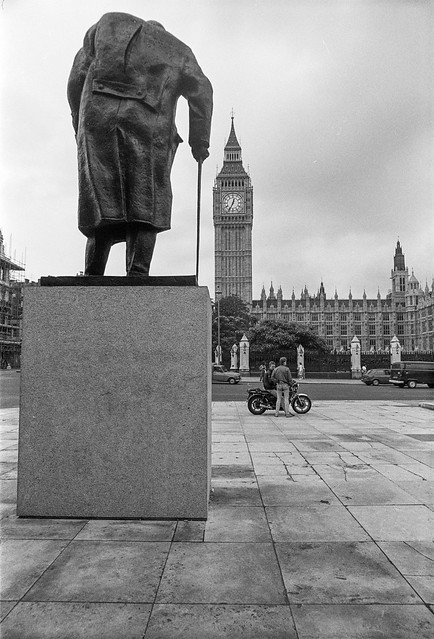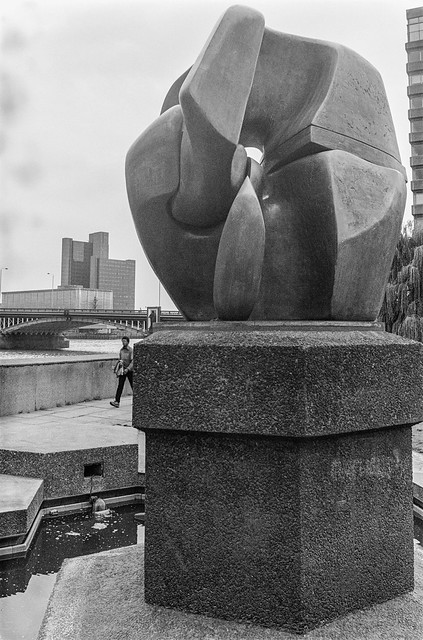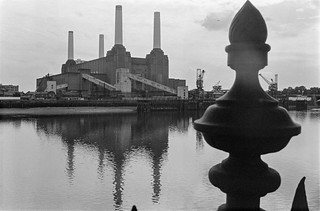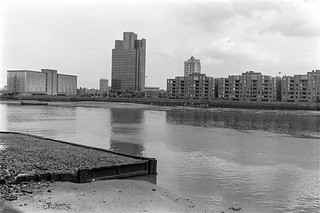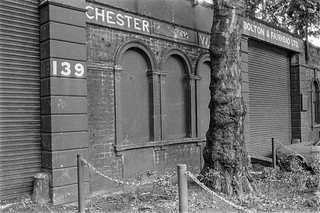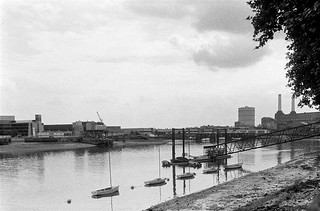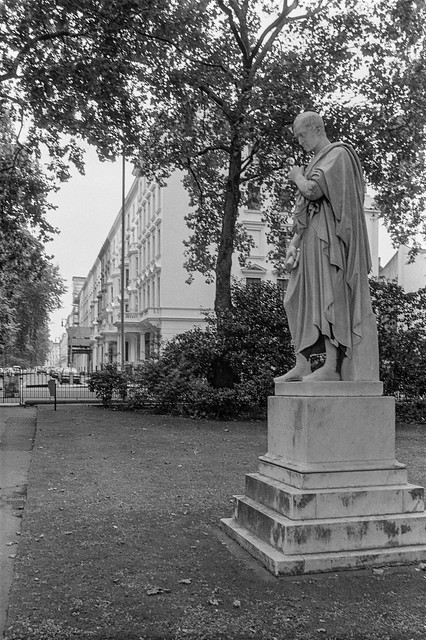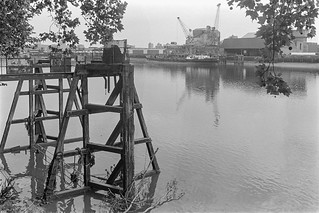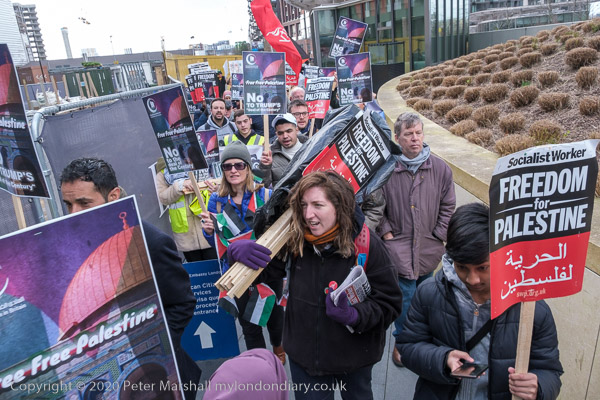
A year ago I was out taking pictures of a protest at the US Embassy in Nine Elms, and it really does seem a huge age ago. I’ve got so used to staying at home, just occasionally going out for a little exercise. But last Thursday I had my first dose of the vaccine, and in a few weeks time I can perhaps be thinking about getting back to work, though until the current lockdown ends (and who knows when that will be) there won’t be many protests for me to photograph.
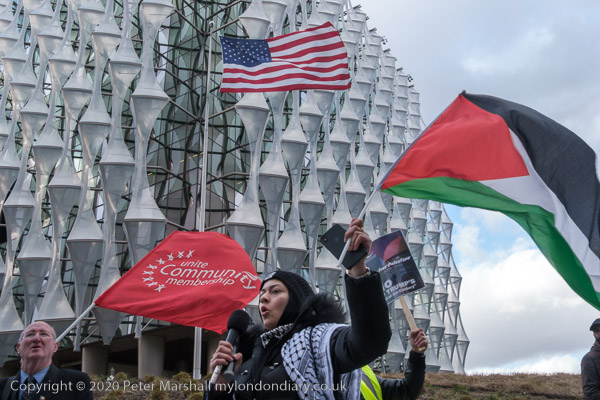
I never much liked the US embassy in Grosvenor Square, and what architectural attraction it had was rather spoiled when it got hidden behind some rather ugly security additions. The new embassy isn’t perhaps a great piece of architecture and the screen which covers three sides is rather a plastic add-on, but at least it does make it stand out from the buildings around, and the moat is rather a nice piece of landscaping. But I think the main motivation behind the move was to move the many protests at the embassy out of the public eye, away from the centre of London to a rather obscure location.
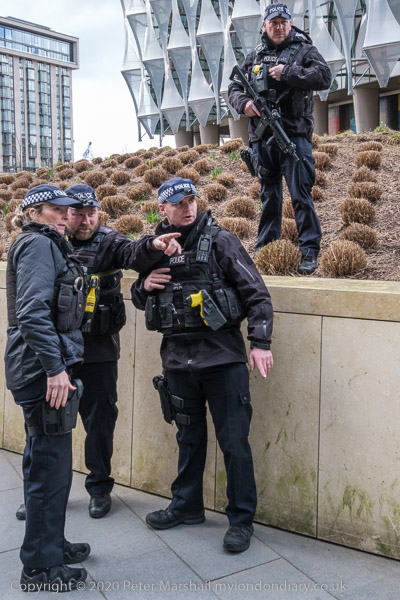
Protests here are invisible, hidden from any road and only seen by the armed guards patrolling the area and by people actually going into or out of the embassy. On a weekday there will be queues for visas, but at the weekend the area is deserted. Of course this does make filming and photography of any protests and the publication of these more important.

Although it is still very much of backwater London, the area around here is also the largest development area in London, with new flats already around the embassy and others going up to the east and the west where there is huge development around Battersea Power Station. It’s already easy to get to, with Vauxhall station, one of London’s larger transport hubs, just a few minutes away, but will be even more accessible once the Northern Line extension to Battersea opens – supposedly this autumn – with a station at Nine Elms.
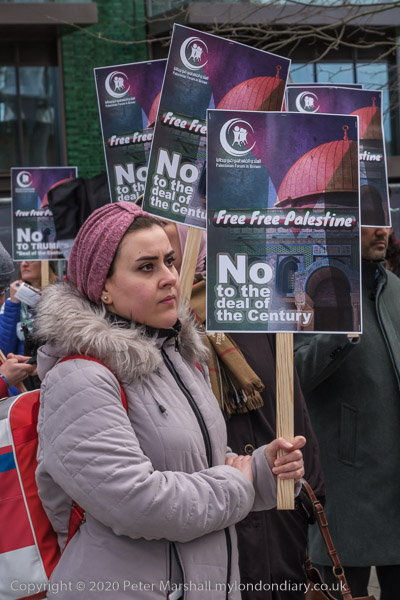
The protest on Saturday 1 Feb was against Trump’s ‘Deal of the Century’ which they say is intended to liquidate the Palestinian cause and minimise sovereignty for the Palestinian people across Palestine, marginalising them in isolated ghettos in a rigid implementation of the current apartheid regime.

It was organised by various Palestinian groups in Britain and supported by the Palestine Solidarity Campaign (PSC), Friends of Al-Aqsa (FoA) and the Muslim Association of Britain (MAB), and there were many Palestinians among the several hundred taking part.
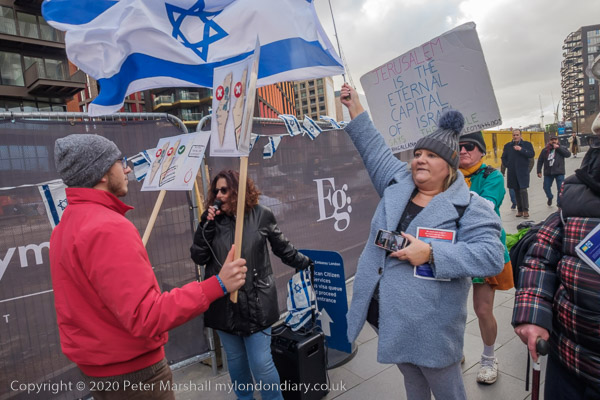
Also coming to protest against the Palestinians was a rather sad group of four Zionists who came to wave Israeli flags and try to disrupt the protest, shouting insults. Some of the protesters confronted them, shouting back, and police stepped in to keep the two groups a short distance apart while the main rally continued.
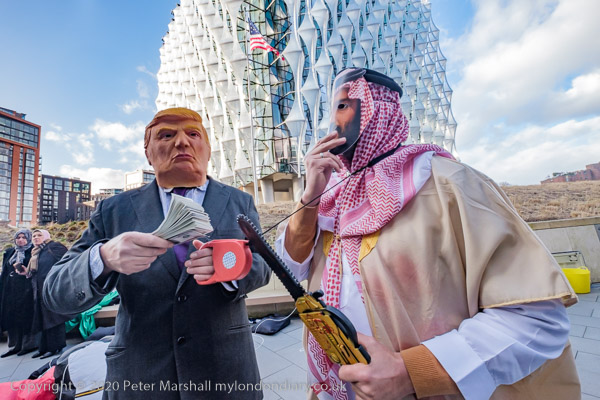
Among the many protesters were a couple posing as President Trump who handed a fistful of dollars to another dressed as Saudi Prince Mohammad bin Salman, who was holding a bone saw like that used to dismember Saudi dissident and journalist for The Washington Post Jamal Kashoggi by the team he ordered to the Saudi consulate in Istanbul, Turkey on 2 October 2018.
More at Palestinians against Trump’s Deal
All photographs on this and my other sites, unless otherwise stated, are taken by and copyright of Peter Marshall, and are available for reproduction or can be bought as prints.
